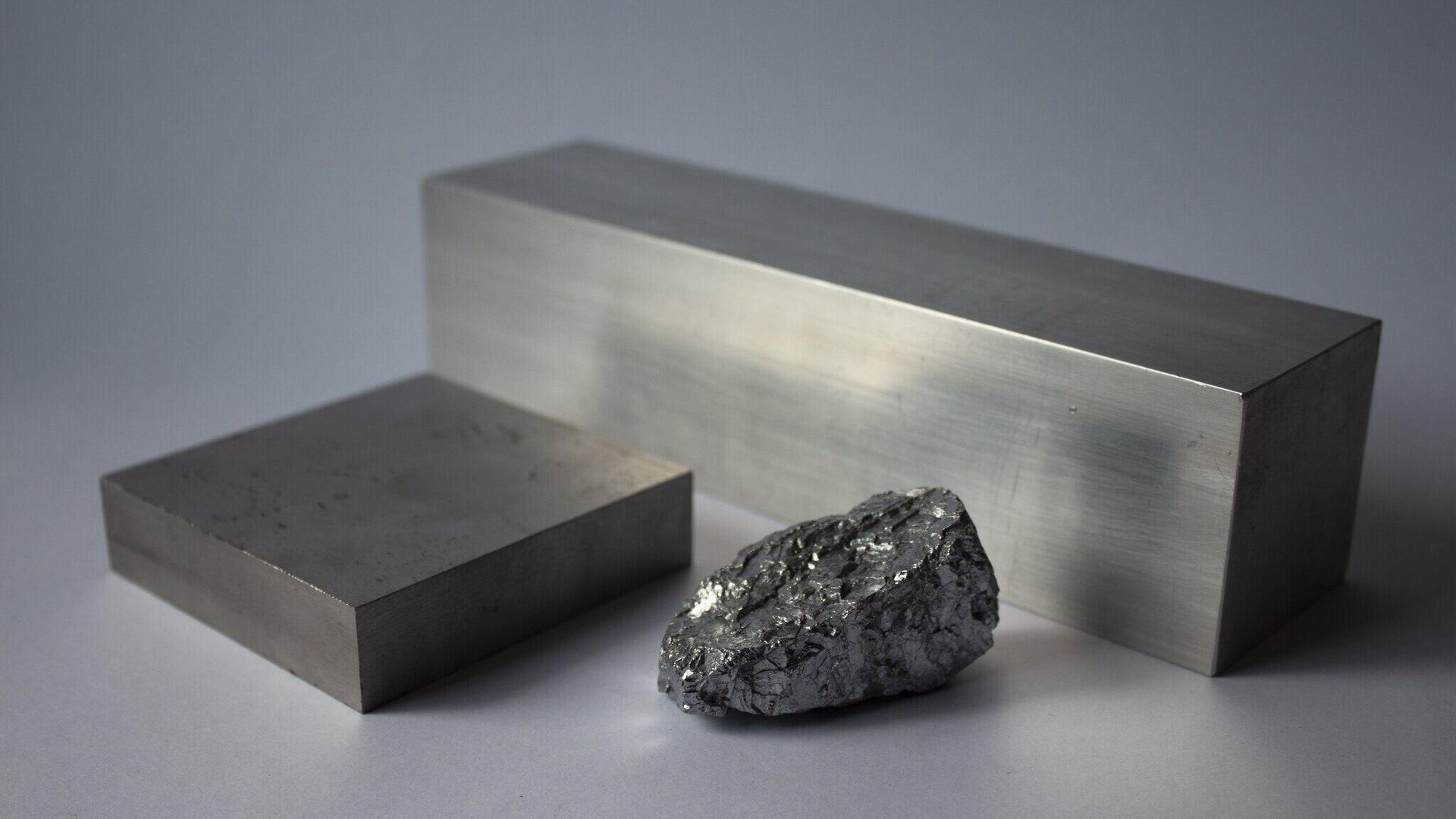https://sputnikglobe.com/20221211/scientists-create-toughest-alloy-ever-1105353904.html
Scientists Create 'Toughest' Alloy Ever
Scientists Create 'Toughest' Alloy Ever
Sputnik International
During their research, scientists focused on studying the alloy CrMnFeCoNi (chromium, manganese, iron, cobalt, and nickel) after realizing that its strength... 11.12.2022, Sputnik International
2022-12-11T12:09+0000
2022-12-11T12:09+0000
2022-12-11T12:09+0000
science & tech
composite materials
discovery
technology
alloys
https://cdn1.img.sputnikglobe.com/img/07e6/0c/0b/1105353411_0:107:2048:1259_1920x0_80_0_0_166a39909602fdd5f71b292fb1e6d8bf.jpg
Scientists have identified an alloy of cobalt, nickel, and chromium as the toughest one known.The team, led by researchers from the Lawrence Berkeley National Laboratory and Oak Ridge National Laboratory, reported encouraging results regarding CrCoNi. All components of this material are mixed in equal proportions. This is a rare feature: alloys usually mix the constituents differently. But most importantly, the performance properties of this mix are unique.The alloy showed very high strength properties, which only increased with extreme cooling. The same "inadequate" behavior was shown by impact toughness parameters, i.e. deformation resistance and ductility. Steel, even its best varieties, become brittle in such circumstances, whereas the new material, on the contrary, only gets stronger.The result of the newly created material is due to the fact that when temperatures fall to critical levels, it fundamentally changes its crystalline lattice: from cubic to hexagonal. This behavior of the atomic structure allows metals both to keep flowing and keep meeting new resistance from obstacles on a much more immense level.The material is unlikely to be used in everyday life, especially since cobalt and nickel are in short supply these days. But it is likely to become more widely used in the space industry and in the production of equipment used in the Arctic.
Sputnik International
feedback@sputniknews.com
+74956456601
MIA „Rossiya Segodnya“
2022
News
en_EN
Sputnik International
feedback@sputniknews.com
+74956456601
MIA „Rossiya Segodnya“
Sputnik International
feedback@sputniknews.com
+74956456601
MIA „Rossiya Segodnya“
strongest alloy ever created, strongest metal ever was made, berkeley national laboratory made strongest metal, crconi
strongest alloy ever created, strongest metal ever was made, berkeley national laboratory made strongest metal, crconi
Scientists Create 'Toughest' Alloy Ever
During their research, scientists focused on studying the alloy CrMnFeCoNi (chromium, manganese, iron, cobalt, and nickel) after realizing that its strength increased at the temperature of liquid nitrogen without compromising toughness. However, one of the derivatives of this alloy, CrCoNi, showed even more astonishing characteristics.
Scientists have identified an alloy of cobalt, nickel, and chromium as the toughest one known.
The team, led by researchers from the Lawrence Berkeley National Laboratory and Oak Ridge National Laboratory,
reported encouraging results regarding CrCoNi. All components of this material are mixed in equal proportions. This is a rare feature: alloys usually mix the constituents differently. But most importantly, the performance properties of this mix are unique.
“When you design structural materials, you want them to be strong but also ductile and resistant to fracture... Typically, it’s a compromise between these properties. But this material is both, and instead of becoming brittle at low temperatures, it gets tougher.”
Easo George
Governor’s Chair for Advanced Alloy Theory and Development at ORNL
The alloy showed very high strength properties, which only increased with extreme cooling. The same "inadequate" behavior was shown by impact toughness parameters, i.e. deformation resistance and ductility. Steel, even its best varieties, become brittle in such circumstances, whereas the new material, on the contrary, only gets stronger.
“The toughness of this material near liquid helium temperatures (20 kelvin, -424 Fahrenheit) is as high as 500 megapascals square root meters. In the same units, the toughness of a piece of silicon is one, the aluminum airframe in passenger airplanes is about 35, and the toughness of some of the best steels is around 100. So, 500, it's a staggering number.”
Robert Ritchie
Senior faculty scientist in Berkeley Lab’s Materials Sciences Division
The result of the newly created material is due to the fact that when temperatures fall to critical levels, it fundamentally changes its crystalline lattice: from cubic to hexagonal. This behavior of the atomic structure allows metals both to keep flowing and keep meeting new resistance from obstacles on a much more immense level.
The material is unlikely to be used in everyday life, especially since cobalt and nickel are in short supply these days. But it is likely to become more widely used in the space industry and in the production of equipment used in the Arctic.

